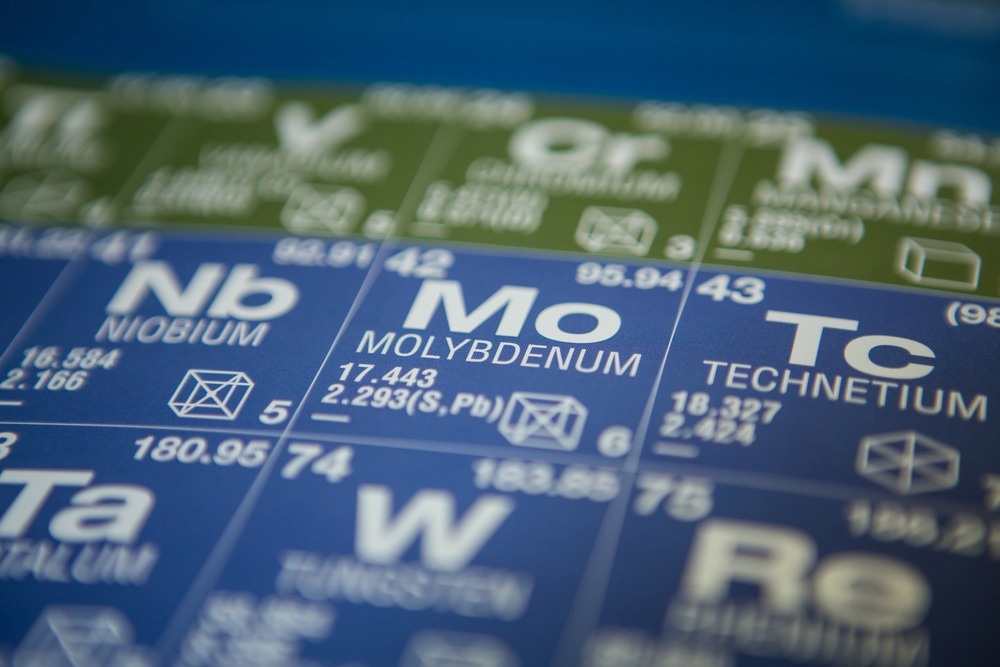A paper published in the journal Materials Today describes a single-step, lithography-free chemical vapor deposition (CVD) fabrication approach for producing single-crystalline molybdenum ditelluride (MoTe2) nanoribbon matrices on standard SiO2/Si platform directly without the need of post-processing or a specialty stepped substrate.

Study: Lithography-free, high-density MoTe2 nanoribbon arrays. Image Credit: Intothelight Photography/Shutterstock.com
The Rise of 2D Materials
Over the last few years, there has been an increased focus on the research of 2D substances other than graphene, owing to the compatibility in the field of semiconductors, as well as the numerous opportunities for discovering novel materials, formations, and characteristics.
Two-dimensional materials with specific patterned architectures, such as arrays, have demonstrated various exceptional features, some of which are not seen in two-dimensional raw materials. As illustrated by carbon nanotube (CNT) frameworks, 2D materials with distinctive shapes have significant promise for future electronics.
Two-dimensional systems might outperform one-dimensional CNTs because of their superior characteristics.
As a result, patterned two-dimensional materials offer a broad range of innovative uses in modern photonic and electronic integrated systems, including thermal mapping devices, nonlinear optics, and nonvolatile bulk data storing systems.
Controlled fabrication of patterned two-dimensional architectures such as nanoribbon frameworks is critically important, but it remains difficult due to the intricate growth processes.
The Need for Efficient Synthesis Techniques
Fabrication procedures for two-dimensional materials have so far been extensively studied, with the majority of them relying on CVD techniques. However, there are hardly any reports on the fabrication of two-dimensional patterned structures via chemical vapor deposition.
In general, obtaining two-dimensional patterned structures is primarily dependent on a delicately tailored substrate. For instance, this may be a carefully pre-processed gold substrate, which is costly and impractical for commercial usage.
Patterned materials in matrices also depend on post-processing methods such as electron-beam lithography (EBL) to produce the necessary patterns, which depend significantly on the technical conditions. Therefore, a fast and effective lithography-free technique for generating two-dimensional transition metal dichalcogenides (TMDs) matrices is urgently needed.
Recent Advancements
A report on molten-salt aided vapor-liquid-solid (VLS) chemical vapor deposition technique was published recently, which resulted in sporadically dispersed thin TMDs ribbons having one μm breadth. Following that, Ni particle-assisted development of bilayer molybdenum disulfide nanoscale ribbons with widths ranging from 8 to 100 nm was documented via a similar VLS method.
While the produced ribbons were not arrays, the fabrication process showed tremendous promise for controllable array fabrication. This indicates that the molten-salt-aided CVD technique could be employed to manufacture patterned TMD structures.
How the Team Synthesized MoTe2 Nanoribbon Arrays
The team selected molybdenum ditelluride as the template due to its distinctive crystalline structure, significant anisotropic behavior, and excellent edge superconductivity.
Atmospheric pressure chemical vapor deposition was employed to create the ribbon arrays of MoTe2 using mixed powders of MoO3 (Sigma) and sodium chloride. For the growth of the MoTe2 sheet, the optimal temperature was 780 oC, which was maintained for 8-15 minutes.
A combination of hydrogen (H2) and argon (Ar) was used as the carrier gas. The burner temperature was then reduced from 780 degrees celsius to 600 degrees celsius in four minutes, and the H2 concentration was increased for etching the fabricated sheet at this step. Finally, the H2 flow was stopped, and nanoribbon arrays of MoTe2 were created once the furnace was cooled to ambient temperature.
Key Findings of the Study
The team presented a single-step, lithography-free fabrication technique for producing high-density MoTe2 nanoribbon arrays on a standard SiO2/Si platform directly, without the need for specifically stepped substrates or post-processing methods.
X-Ray photoelectron spectroscopy, Raman spectroscopy, and electrical characterization showed that the produced MoTe2 nanoribbons were aligned correctly in highly-dense arrays.
The suggested crystalline-structure accelerated solid-liquid-vapor (SLV) self-etching technique might explain the etching behaviors seen throughout the growth phase. The ribbon edge structures found in scanning transmission electron microscopy (STEM) investigations were well described by the A-type molybdenum edge presented in first-principles computations.
The results provide fresh insights into the lithography-free preparation of large-area MoTe2 frameworks for integrated systems, as well as their prospects for developing innovative multipurpose electronic systems.
Reference
Deng, Y., Zhu, C. et al. (2022). Lithography-free, high-density MoTe2 nanoribbon arrays. Materials Today. Available at: https://doi.org/10.1016/j.mattod.2022.06.002
Disclaimer: The views expressed here are those of the author expressed in their private capacity and do not necessarily represent the views of AZoM.com Limited T/A AZoNetwork the owner and operator of this website. This disclaimer forms part of the Terms and conditions of use of this website.